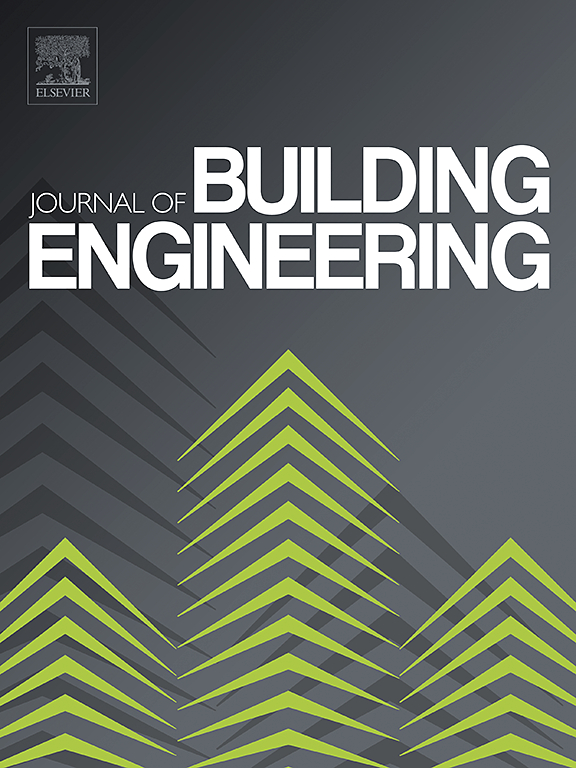Flexural behavior of bolted precast concrete floors at the serviceability limit state
IF 7.4
2区 工程技术
Q1 CONSTRUCTION & BUILDING TECHNOLOGY
引用次数: 0
Abstract
The traditional wet connection strategy in precast concrete floor systems impedes the further improvement of construction speed and the replacement of components when damaged or their recycling after service life. A novel bolted precast concrete floor has recently been proposed to cater the increasing demand for both rapid assembly and demountable features in precast structures. Excessive deformations that exceed expectations resulting in aesthetic defects and economic losses underscore the importance of accurately predicting the serviceability limit state for floors. Flexural tests were conducted to investigate the flexural behavior of the bolted precast floors up to the serviceability limit state. The tested bolted floors exhibited two-way flexural behavior, which was specifically reflected in similar cracking patterns and displacement distributions compared to those of monolithic two-way slabs. The combination of bolted double-steel-plate (BD) joint connectors and bolted angle (BA) anchorage connectors realized a 17.1 %–26.4 % improvement in the floors’ serviceability limit load. A simplified general simulation strategy for bolted connectors was employed in the finite element (FE) study, utilizing built-in connector elements to accommodate different types of bolted connectors, which enhanced the general applicability of the FE models. Two machine learning (ML) models were established to assess their feasibility of predicting the serviceability limit load of the bolted floors. Both ML models demonstrated favorable predictive performance, with their R螺栓预制混凝土楼板在使用极限状态下的受弯性能
预制混凝土楼盖系统中传统的湿连接策略阻碍了施工速度的进一步提高和构件损坏后的更换或使用寿命后的回收。最近提出了一种新型螺栓预制混凝土楼板,以满足预制结构对快速组装和可拆卸特性日益增长的需求。超过预期的过度变形会导致美观缺陷和经济损失,这强调了准确预测地板使用极限状态的重要性。进行了抗弯试验,以研究螺栓预制楼板在使用极限状态下的抗弯性能。测试的螺栓楼板表现出双向弯曲行为,这具体反映在与整体双向楼板相似的裂缝模式和位移分布上。采用螺栓双钢板(BD)连接接头和螺栓角(BA)锚固接头组合,楼板使用极限荷载提高17.1% ~ 26.4%。在有限元研究中,采用简化的螺栓连接件通用仿真策略,利用内置连接器单元适应不同类型的螺栓连接件,提高了有限元模型的通用性。建立了两个机器学习(ML)模型,以评估其预测螺栓楼板使用极限载荷的可行性。两种ML模型均表现出较好的预测效果,R2均超过0.95,MAPE均在0.025以下。此外,将SHapley加性解释(SHAP)分析与ML模型相结合,创建了一个可解释的模型。通过对模型的解释,从全局和局部两个层面研究了输入特征对可用性极限载荷的影响。
本文章由计算机程序翻译,如有差异,请以英文原文为准。
求助全文
约1分钟内获得全文
求助全文
来源期刊

Journal of building engineering
Engineering-Civil and Structural Engineering
CiteScore
10.00
自引率
12.50%
发文量
1901
审稿时长
35 days
期刊介绍:
The Journal of Building Engineering is an interdisciplinary journal that covers all aspects of science and technology concerned with the whole life cycle of the built environment; from the design phase through to construction, operation, performance, maintenance and its deterioration.
 求助内容:
求助内容: 应助结果提醒方式:
应助结果提醒方式:


